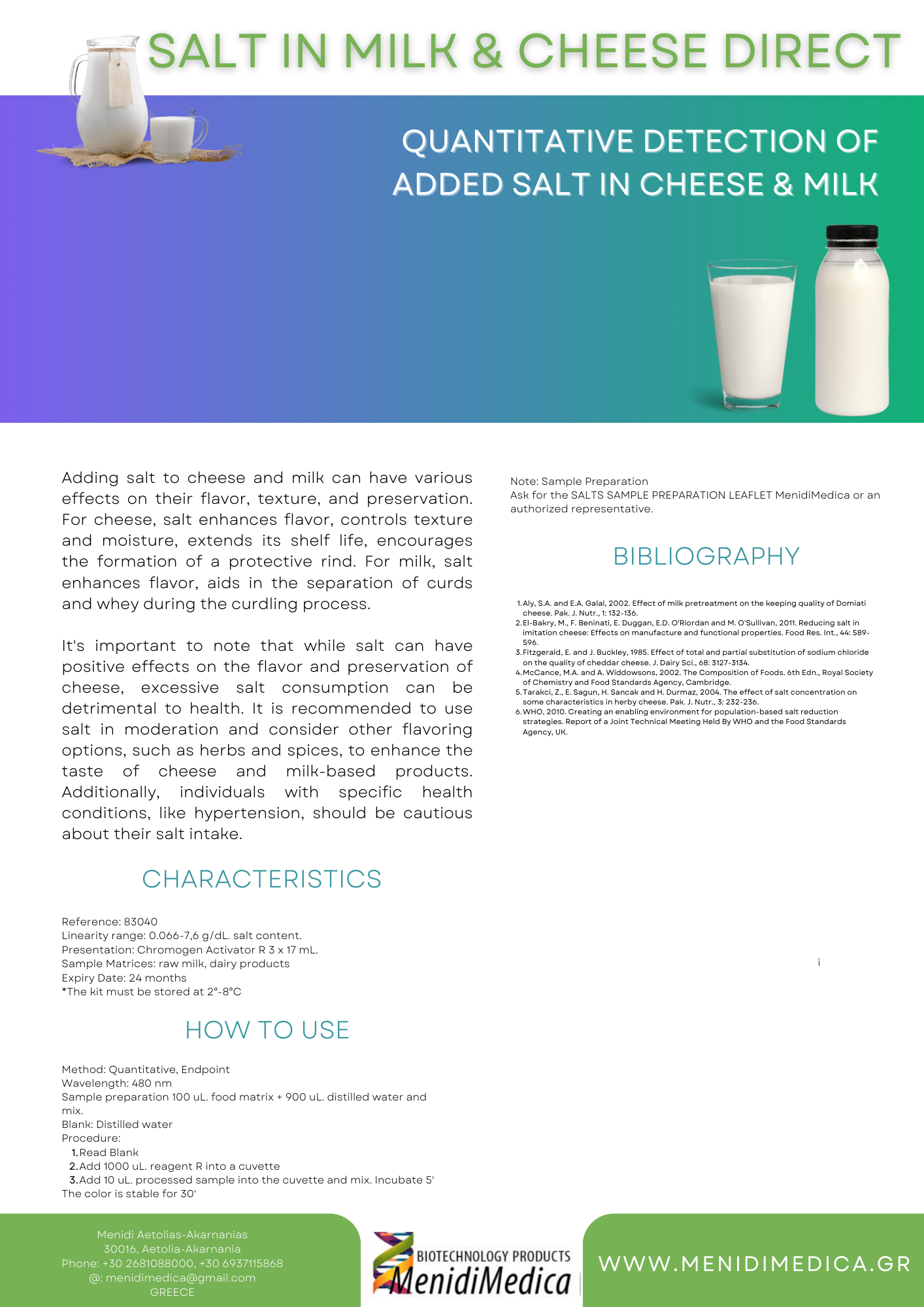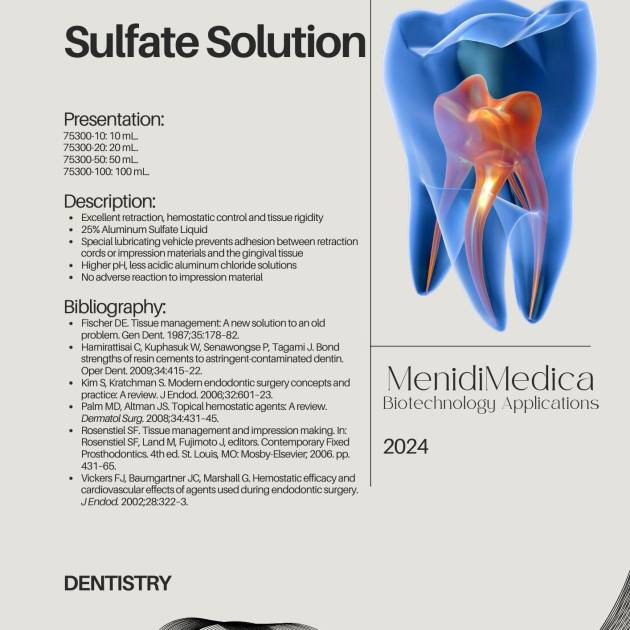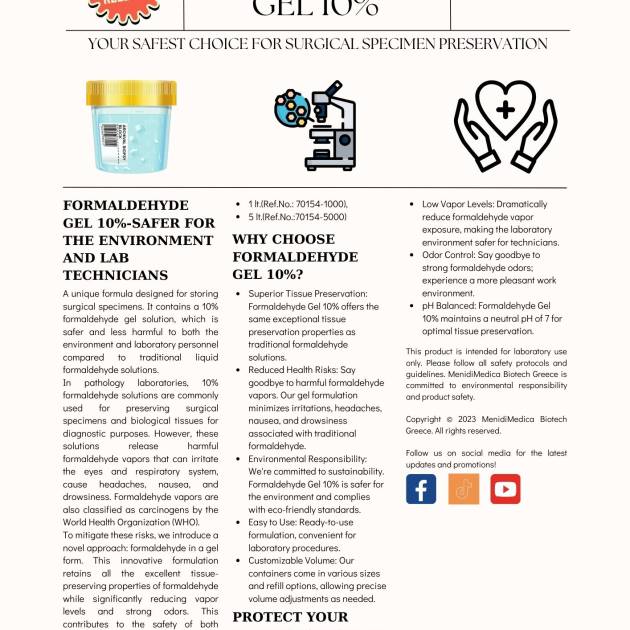Description
QUANTITATIVE DETECTION OF ADDED SALT IN CHEESE & MILK
Adding salt to cheese and milk can have various effects on their flavor, texture, and preservation. For cheese, salt enhances flavor, controls texture and moisture, extends its shelf life, encourages the formation of a protective rind. For milk, salt enhances flavor, aids in the separation of curds and whey during the curdling process.
It’s important to note that while salt can have positive effects on the flavor and preservation of cheese, excessive salt consumption can be detrimental to health. It is recommended to use salt in moderation and consider other flavoring options, such as herbs and spices, to enhance the
taste of cheese and milk-based products. Additionally, individuals with specific health conditions, like hypertension, should be cautious about their salt intake.
CHARACTERISTICS
Reference: 83040
Linearity range: 0.066-7,6 g/dL. salt content.
Presentation: Chromogen Activator R 3 x 17 mL.
Sample Matrices: raw milk, dairy products
Expiry Date: 24 months
*The kit must be stored at 2°-8°C
HOW TO USE
Method: Quantitative, Endpoint
Wavelength: 480 nm
Sample preparation 100 uL. food matrix + 900 uL. distilled water and mix.
Blank: Distilled water
Procedure:
1. Read Blank
2. Add 1000 uL. reagent R into a cuvette
3. Add 10 uL. processed sample into the cuvette and mix. Incubate 5′
The color is stable for 30′
Note: Sample Preparation
Ask for the SALTS SAMPLE PREPARATION LEAFLET MenidiMedica or an authorized representative.







